-
Posts
12446 -
Joined
-
Last visited
-
Days Won
555
Content Type
Profiles
Forums
Events
Everything posted by Fiery
-

fixed: Missing PCH Diode temperature on MSI GT75 Titan 8RG
Fiery replied to BlakLanner's topic in Bug reports
Thank you. We've found the bug, it will be fixed in the next AIDA64 beta build. I'll post a message into this topic once the new beta update is available for download. -

Change manager needs some love
Fiery replied to Tod's topic in Network audit, change tracking, SQL databases
Here are a few issues and questions about your suggestions: 1) AIDA64 Change Manager has to look outside the date range in order to assure that it can find the baseline (last state) of each computer involved in the selected date range. For example, if you set the date range to January 01, 2018 ... October 29, 2018 (today), and a change occured on January 01, 2018, without looking back to previous reports (that were made before January 01, 2018) AIDA64 wouldn't be able to detect a change occured on January 01, 2018. 2) The exclusion is much easier to maintain, since that way AIDA64 doesn't have to first enumerate the list of computers in your currently selected date range. Inclusion would either have to be manually listing the computers, one by one; or by first enumerating them (which could take a while) and then offer you a list of computers with a checkbox for each. Let me know if either of those would suit your needs. 3) Do you want to also have the ability to reverse an authorized change? 4) The Quick Report is supposed to put all the changes in the currently selected list into a report. It doesn't matter if you right-click on a computer or on a line between the changes of 2 computers (an empty line basically). Do you want to keep the current logic when you click on an empty line or a line of a certain change event, but have the report for a single computer when you right-click on the name of a computer? It would of course have to work different on other tabs than Computer, e.g. to report only the changes for the selected user on the User tab, etc. -

fixed: Incorrect Vcore voltage reading on Asus Maximus XI Hero
Fiery replied to Naennon's topic in Hardware monitoring
Thank you for your feedback -
We've tweaked device opening on Corsair H115i Pro to make it work more stable with your system. Please upgrade to the latest beta version of AIDA64 Extreme available at: https://www.aida64.com/downloads/latesta64xebeta After upgrading to this new version, make sure to restart Windows to finalize the upgrade. Let me know how it works on your system.
-
We've implemented the requested feature in the latest beta version of AIDA64 Extreme available at: https://www.aida64.com/downloads/latesta64xebeta After upgrading to this new version, make sure to restart Windows to finalize the upgrade. Let me know how it works.
-

fixed: Incorrect Vcore voltage reading on Asus Maximus XI Hero
Fiery replied to Naennon's topic in Hardware monitoring
We've fixed it up in the latest beta version of AIDA64 Extreme available at: https://www.aida64.com/downloads/latesta64xebeta After upgrading to this new version, make sure to restart Windows to finalize the upgrade. Let me know how it works -

fixed: Missing PCH Diode temperature on MSI GT75 Titan 8RG
Fiery replied to BlakLanner's topic in Bug reports
Thank you for the data! Make sure to upgrade to the latest beta version of AIDA64 Extreme available at: https://www.aida64.com/downloads/latesta64xebeta After upgrading to this new version, make sure to restart Windows to finalize the upgrade. Let me know how it works. -
No, it's not. We just have too many things on our table right now Please give us a few more weeks to implement that.
-
We're working on that. There are multiple ways to do that, but none is easy I'm afraid
-
Yes, it'd worth trying to disable Secure Boot and check it again.
-
I've never used Python, so I can only make suggestions that will apply to any programming languages. You can either use the Shared Memory feature, in case you can use Win32 API calls... Or use the Registry feature if you have access to the Windows Registry from your script or program. Another solution might be to expose an interface in your microcontroller that can be used by 3rd party applications (like AIDA64) to push data onto the display directly. Either by sending textual information (like "CPU Clock = 32 C") or bitmap images in case the LCD display you use is a graphical one. Either way, if you would let AIDA64 talk directly to the display, we would be happy to implement your protocol as a new LCD device. Just keep us posted through this topic.
-
We've never tried to use that value to detect bus type. What we do is simply go by the GPU type, by using its PCI device ID. We then have a backend database that indicates whether a certain GPU is integrated or bus-connected (like PCI, AGP, or PCI Express).
-
No, that was designed for older Asus motherboards, and will not work properly for Asus motherboards released in the past few years up to today.
-

AIDA64 Extreme shuts down itself (Asus Maximus X Hero)
Fiery replied to The_Fab's topic in General Discussion
Please let us know more about your system configuration. Motherboard model, CPU type, video card(s) model, Windows version/build, AIDA64 version/build? -
I'm afraid I have no idea what might cause the booting issues. Other than something about the USB device enumeration in the BIOS. But it's hard to dig deeper than that
-

New LCD device support: RoboPeak RPUSBDisp (DFRobot DFR0275)
Fiery replied to Fiery's topic in Hardware monitoring
We haven't taken it apart, so I don't have what LCD driver IC is used in this device. -

fixed: Incorrect Vcore voltage reading on Asus Maximus XI Hero
Fiery replied to Naennon's topic in Hardware monitoring
Make sure to upgrade to the latest beta version of AIDA64 Extreme available at: https://www.aida64.com/downloads/latesta64xebeta After upgrading to this new version, make sure to restart Windows to finalize the upgrade. Let me know if it helps. -
There're a few compromises in the Turing uarch compared to Pascal/Volta that could explain the performance drop. We however had no chance to dig deeper into Turing just yet. Once we can get a test sample, we'll analyze the issue. There may not be room for further optimizations though (on our side), since our OpenCL benchmarks rely heavily on the OpenCL compiler, and the fractal benchmarks are quite simply "too simple" to leave room for any tweakings on our part. nVIDIA may find some tricks on their side that they can implement in their OpenCL compiler, but I'm not sure how much attention they have about OpenCL benchmarks and optimizing their compiler to better work with such benchmarks
-
Thank you, we've added this display to AIDA64.
-
It's because your displays are not included in the AIDA64 monitor database yet. We've added this one, but if you have more where it shows "[NoDB]" in the monitor name, please post them as well, and we'll add them too.
-

fixed: Gigabyte X48-DQ6 sensor readings all messed up in the latest version
Fiery replied to drapos's topic in Bug reports
Thank you for your feedback!

